Extinction Rebellion Australia: who are they and what do they want?
Extinction Rebellion has grown from a small protest group to one capable of causing worldwide chaos, but will the movement actually effect change?
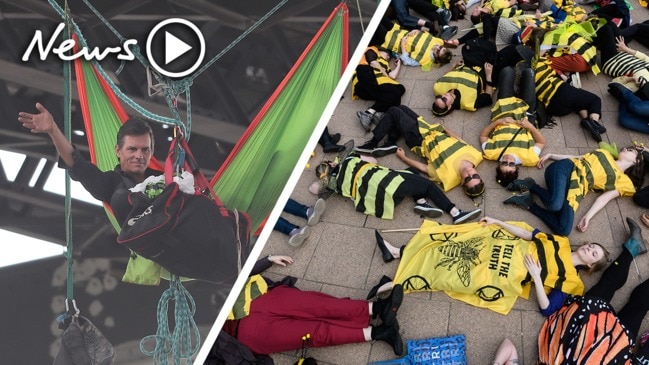
Climate Change
Don't miss out on the headlines from Climate Change. Followed categories will be added to My News.
A funny thing happened to Australians and climate change at the beginning of this decade.
Just a few years after Kevin Rudd deemed it “the great moral challenge of our generation”, support for actually doing anything about it plumetted.
According to a 2006 Lowy Institute tracking poll, 68 per cent of respondents agreed that climate change was a “serious and pressing problem” and that we should do something about it, even if that involved “significant costs” — but by 2012 that figure had dropped to just 36 per cent.
Now, the proportion of Australians willing to pay for action on climate change has marched back up to 61 per cent.
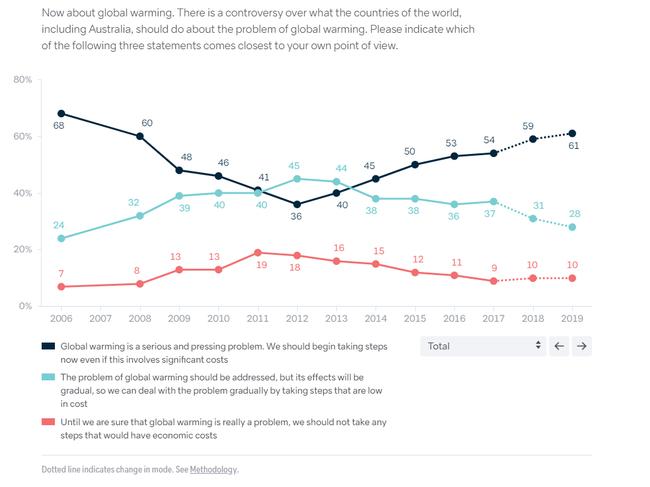
Many would say that’s no wonder, given the sheer weight of evidence that has accumulated this decade, all pointing to the conclusion that the world’s weather has gone seriously off-kilter.
But what remains to be seen is if the protest actions of Extinction Rebellion (ER) will draw more Australians to the climate change cause, or whether their tactics will repel them. Certainly the street blockades, “die-ins”, “bee-mergency events” and the dozens of arrests have garnered attention, but will they just ultimately harden opposition to their cause?
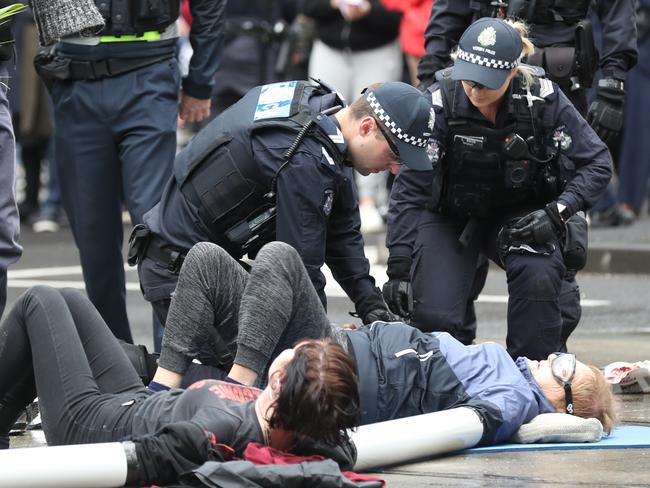
This time last year, the group was all but unheard-of in Australia.
But this week they’ve been everywhere, part of a global movement occupying city streets, squares, bridges and transport systems with noisy demands that the government declare a climate emergency.
Their antics this week have enraged many, most notably TV host Kerri-Anne Kennerley, who said street protesters should be used as “speed bumps” and left to starve in jails.
Even left-leaning politicians have been unimpressed. Victoria’s Premier Daniel Andrews said “I don’t know that shutting the city down necessarily wins you many friends,” while Queensland’s Premier Annastacia Palaszczuk said the group “need to be brought under control”.
ER members themselves liken their actions to a smoke alarm — a source of annoyance at first, but ultimately a lifesaver.
Spokesperson James Norman told News Corp that non-violence was a central tenet of the group.
“It’s very clear,” he said. “We have the principle of respect for everyone.”

He also rejected Ms Palaszczuk’s suggestion that protesters were holding up people from getting to hospital.
“We have a clear policy that we will always let emergency vehicles through,” he said. “We have no desire to impinge on anyone’s safety.”
“Our disruptions may be annoying and inconvenient and we apologise for that, but they are the last tool in the toolbox,” Mr Norman said.
“We’ve tried petitions, we’ve tried one-off protests and none of them have worked. Emissions are still rising. This is a way to bring the issue to a head.”
Miriam Robinson, who helped launch Extinction Rebellion Australia with friend Jane Morton in November last year after they were inspired by the work of the original group in the UK, said the group had expected the backlash they had seen this week.
“But every time we do an action a lot of people jump on board,” she said, adding that 1600 people had become members this week alone.

The group have had some success in the UK, where they launched a year ago.
The British Parliament declared a climate emergency in May and announced the creation of a “Citizen’s Assembly” to advise them on environment issues in June.
That same month, then Prime Minister Teresa May pledged the UK would reach zero greenhouse gas emissions by 2050.
In Australia, the “wins” have been more modest, although the parliaments in South Australia and the ACT have declared climate emergencies, as have many local councils.
“First we get them to say we’re in an emergency, and then we get them to change the laws,” Ms Robinson said.
ER are also demanding the creation of a Citizens’ Assembly, but unlike the one established in the UK — and also unlike the body proposed by Julia Gillard in 2010 — ER wants an assembly that would actually direct government climate policy, not just advise on it.
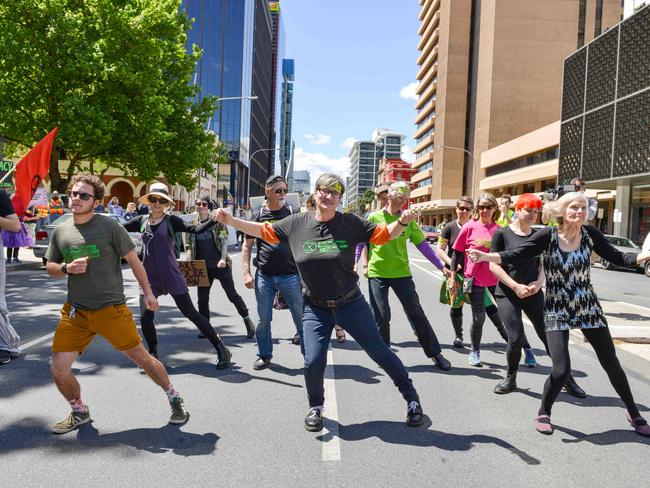
If that sounds dramatic, that’s only the beginning.
Ms Robinson said Australia’s coal industry should be immediately shut down, brushing off concerns about the economic impact of such a move with the startling claim that the coal mining industry “employs fewer people than Bunnings”.
Official data reveals that is false.
According to the August 2019 ABS labour force survey, 46,100 people were employed in the coal mining sector, while on its website, Bunnings says it employed over 44,000 team members as at 30 June 2019. (It should also be noted that the coal mining industry averaged a total employment of 53,600 people over the four quarters of the 2018/2019 financial year, according to the ABS.)
Ms Robinson said the economy needed to be restructured to combat the effects of climate change, and that restructuring had to happen “at the speed and scale of a World War Two mobilisation”.
Countries were able to restructure their economies on to a war footing within a year as hostilities broke out, and a similar sense of urgency was needed now, she said.

That sort of language will seem alarmist to many, but it accords with the strident messages that ER have been spruiking in Australian cities this week.
RELATED:
Opinion: climate denying cultists a bigger risk than Extinction Rebellion
Opinion: the little habit that shows just how hard climate fight will be
Opinion: Stop scaring kids with climate change, you eco-bullies
The question remains: will such alarmism prompt more community support for climate change action?
Professor Neil Gunningham from the Fenner School of Environment and Society at ANU says
evidence has shown that “twice as many nonviolent campaigns have been successful as those that involved violence”.
Research has shown that “once 3.5 per cent of the population is mobilised on an issue, far reaching change becomes almost inevitable,” he added.

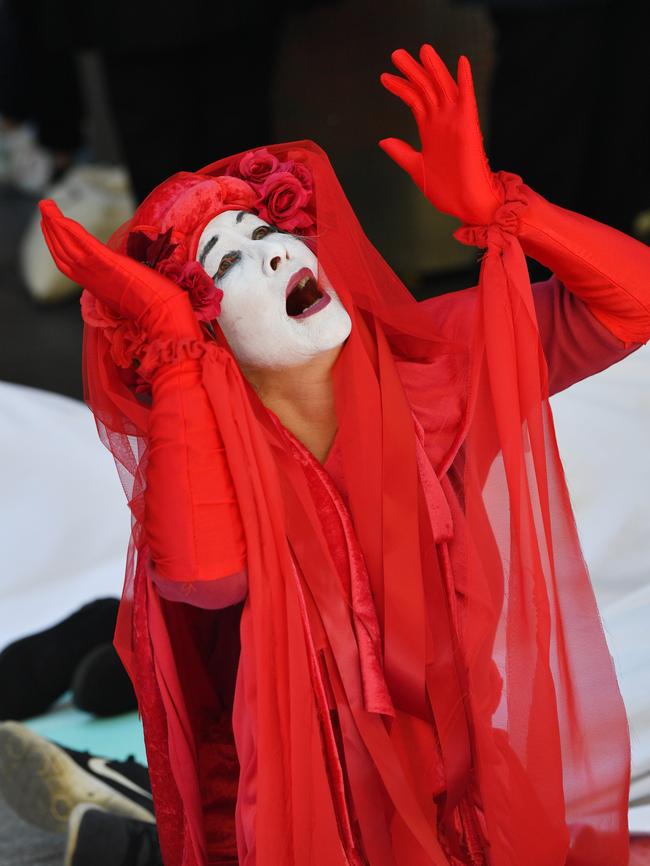
Professor Mark Howden, the Director of the Climate Change Institute at ANU, says he “understands the concerns of Extinction Rebellion” but his own preference was to work with stakeholders and decision makers.
“The jury is still out (on Extinction Rebellion),” he said. “It almost seems like a small amount of disruption gets support, but when it is carried to a larger extreme it tends to lose support. It seems to me there is a sweet spot in terms of (protest) activities.
“They need to know how far to push it before it goes too far.”

